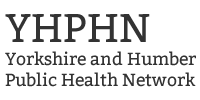
Can People Change? The essence of a public health approach.
25 November 2019
When the Home Office provided funding to 18 areas of the UK to establish Violence Reduction Units, they specified the requirement that a ‘public health approach’ should be taken. It stands to reason that all of these areas have sought to define what it actually means to take a public health approach.
What is a public health approach to violence?
Some have talked about a public health approach treating violence as a disease - tracking it back to its source and looking to prevent spread. There are arguments that this overmedicalises what is a largely social issue[1]. Yes – a public health approach does look at the causes of the violence. And not only that, it looks at the causes of those causes. Taking a public health approach is about going back to the very beginning. Understanding progression, then working to prevent violence across the whole spectrum of risk, at all levels (individual, relationship, community and societal).
By far the best document that we have come across that explains ‘a public health approach to...’ is this: Public Health Approaches in Policing. You can replace the ‘policing’ with just about anything. This document outlines five elements to a Public Health approach that we have adopted in South Yorkshire.
- Taking a population approach – it is important to understand the needs of the whole population, in order to better focus resources. Key point = need does not equal demand, and those most able to access resources are often those that need them least (and vice versa).
- Causes of the causes – understanding the determinants of violence. These are largely the same as the determinants of health, and there is a famous diagram that depicts them nicely (Dahlgren and Whitehead). As well as the social determinants, there are Adverse Childhood Experiences (ACEs), adverse community environments (together known as “the pair of ACEs”) and trauma – both in childhood and adulthood.
- Data and evidence base – understanding the issue is key, as is developing and strengthening the evidence base. Evidence is good at individual level, but poor at relationship, community and societal level – strengthening this is hugely important. Our area profiles are seeking to understand local issues – but these need to be continuous processes, not static documents. In South Yorkshire we are working to build a dashboard of data that can be interrogated with various questions that we want to answer (although this is a much longer term aim).
- Partnership – another requirement from the Home Office and also another incredibly important element. There is no one agency that operates across the whole system. A key role for Violence Reduction Units is to coordinate and align organisations across the system.
- Prevention – the core of a public health approach. There are three types of prevention: primary, secondary and tertiary. We are often very good at tertiary prevention – working to provide an alternative or a way out for people entrenched in violence. Sometimes we think that because we are doing tertiary prevention activities, we are “covering” prevention. Or because we do secondary prevention well (things like early help or early intervention, where we aim to stop progression of issues), we are doing well at prevention. The thing we do least of is the thing we need most: primary prevention. This is where we work to prevent violence happening right back before it was even a possibility. This is investment in young people. Investment in communities. In services. In the welfare system. In families. This is investment in all people – believing that all people have the same rights to a minimum standard of living.
Taking a public health approach is also about enforcement and criminal justice. Some people believe that a public health approach is “soft”. It is not. People must be held to account for their actions when they are criminally culpable.
I had a conversation with someone the other day who told me the answer to violence was more police on the street. A deterrent. Squash the problem. Hit them hard. (I found the choice of language oddly ironic and it really highlights how much a part of our culture violence is). I asked: “How do we stop the need to ‘hit them hard’ in the first place?”. No answer. We can’t arrest our way out of a social issue. Violence is a social issue.
The heart of a public health approach though, which I haven’t yet seen articulated, is the belief that people can change. A fundamental belief that if people want to, and are provided with the right support, tools, and environment, people can change.
Often, in conversation, I hear people say things like: “He had enough chances.”; “She was offered support and didn’t engage”; “They made their choice.”
So when do we give up on people? When we repeatedly offer support, and for a myriad of complex reasons people are unable to accept it there and then, when is enough, enough?
How many chances do we give?
My answer?
We give as many chances as someone needs. We keep offering that way out. That way forward. While ensuring that people are held responsible for their actions. This isn’t about being lenient. This is about giving people options that they may not have had before.
At what point does a criminally or sexually exploited child stop being exploited? Is it age 16? 18? 21? Even at age 30 – there is often a history of abuse, exploitation and trauma. All with accompanying changes to brain development and impacts on mental and behavioural state. I am not saying that people who were exploited are somehow excused of their crimes – they are absolutely criminally culpable most of the time. I AM saying that there is a history, and a reason. And if we believe that people can change, then we will help them, rather than isolate them from society further (for example: having been in prison means that finding employment is incredibly difficult).
Often, we believe that our piecemeal bits of support will help. In truth, we must come together, as a society, as communities, as friends, to help each other. To listen and to care. It reminds me of this poem:
“An Addict Fell In A Hole And Couldn't Get Out.
A businessman went by and the addict called out for help.. The businessman threw him some money and told him to buy himself a Ladder.
But the addict could not buy a ladder in the hole he was in.
A doctor walked by.
The addict said "Help! I can't get out!" The doctor gave him some drugs and said, "Take this. It will relieve the pain."
The addict said thanks, but when the pills ran out, he was still in the hole.
A well-known psychiatrist rode by and heard the addict’s cries for help. He stopped and asked, "How did you get here? Were you born there? Did your parents put you there? Tell me about yourself, it will alleviate your sense of loneliness."
So the addict talked with him for an hour, then the psychiatrist had to leave, but he said he'd come back next week.
The addict thanked him, but he was still in the hole.
A Priest came by. The addict called for help. The Priest gave him a bible and said, "I'll say a prayer for you." He got down on his knees and prayed for the addict, then he left.
The addict was very grateful, he read the bible, but he was still stuck in the hole.
A recovering addict happened to be passing by. The addict cried out, "Hey, Help me. I'm stuck in this hole!"
Right away the recovering addict jumped down in the hole with him.
The addict said, "What are you doing? Now we're both stuck here!!"
But the recovering addict said, "Calm down. It's okay. I've been here before.
I know how to get out."
--Author Unknown
Point being – we can do all the (worthwhile) sporting and social interventions with young people that we want – if a young person is hungry because they have only eaten one meal today; went to school without showering for over a week because mum couldn’t afford to put gas or electric on; had to help siblings get ready in the morning because mum was at work really early; and is being bullied for their trousers being too short (they’ve grown and mum can’t afford more) - being offered £50 to sell something for someone who is kind to them is a bit of a no-brainer.
For me – the public health approach is about remembering that people behave in a way that their circumstances dictate. Everyone has a choice, but some peoples’ choices are rather more limited than others. Taking a public health approach is about remembering that people can change, and giving people as many chances as they need, while ensuring they take responsibility for the choices they make.
Collaborative piece by Greg Fell, Director of Public Health Sheffield City Council and Rachel Staniforth, Head of the South Yorkshire Violence Reduction Unit.
[1] https://members.tortoisemedia.com/2019/03/09/knife-crime/content.html?sig=QThbvstgmWJ0hKkAqwu70RHVKstE0EcE14u3sEsdMOE&utm_source=Twitter&utm_medium=Social&utm_campaign=9March19&utm_content=Not_a_sticking_plaster
